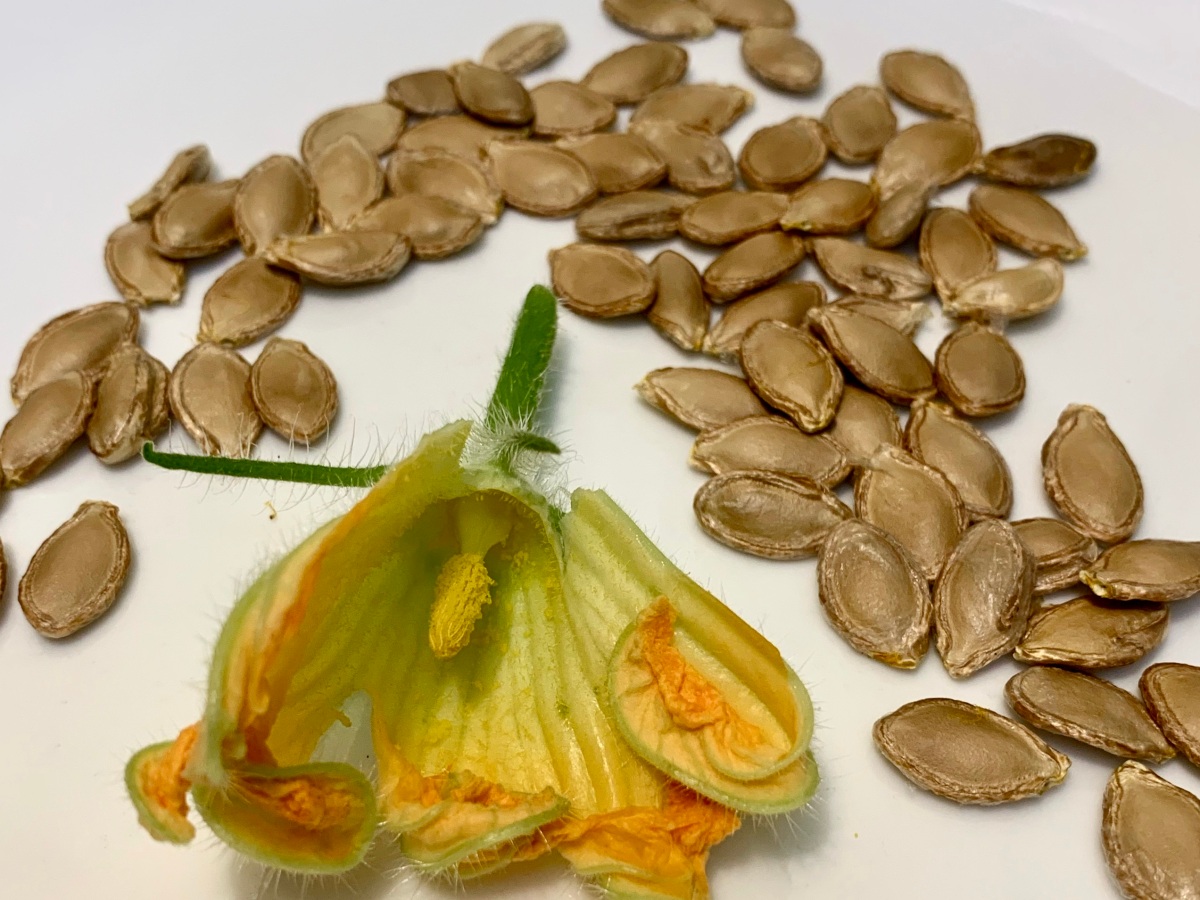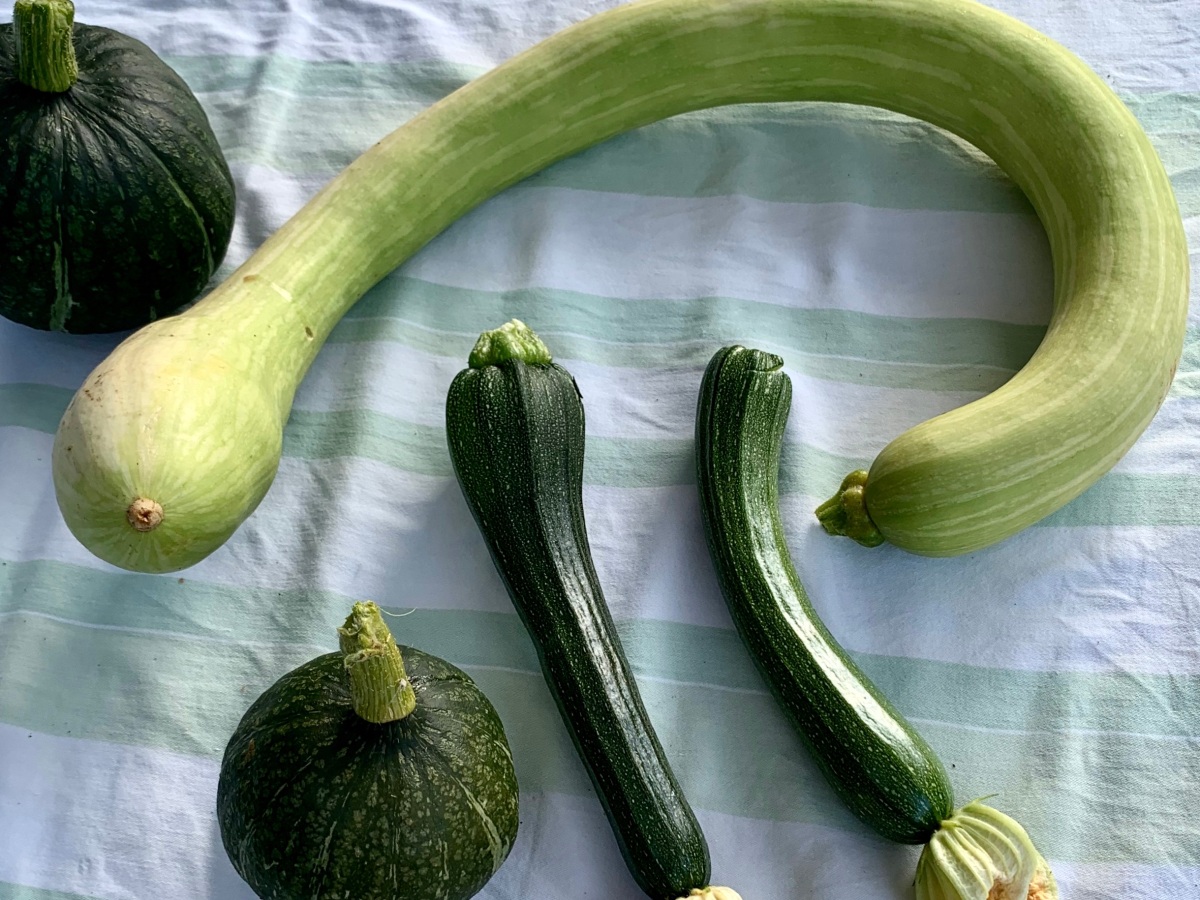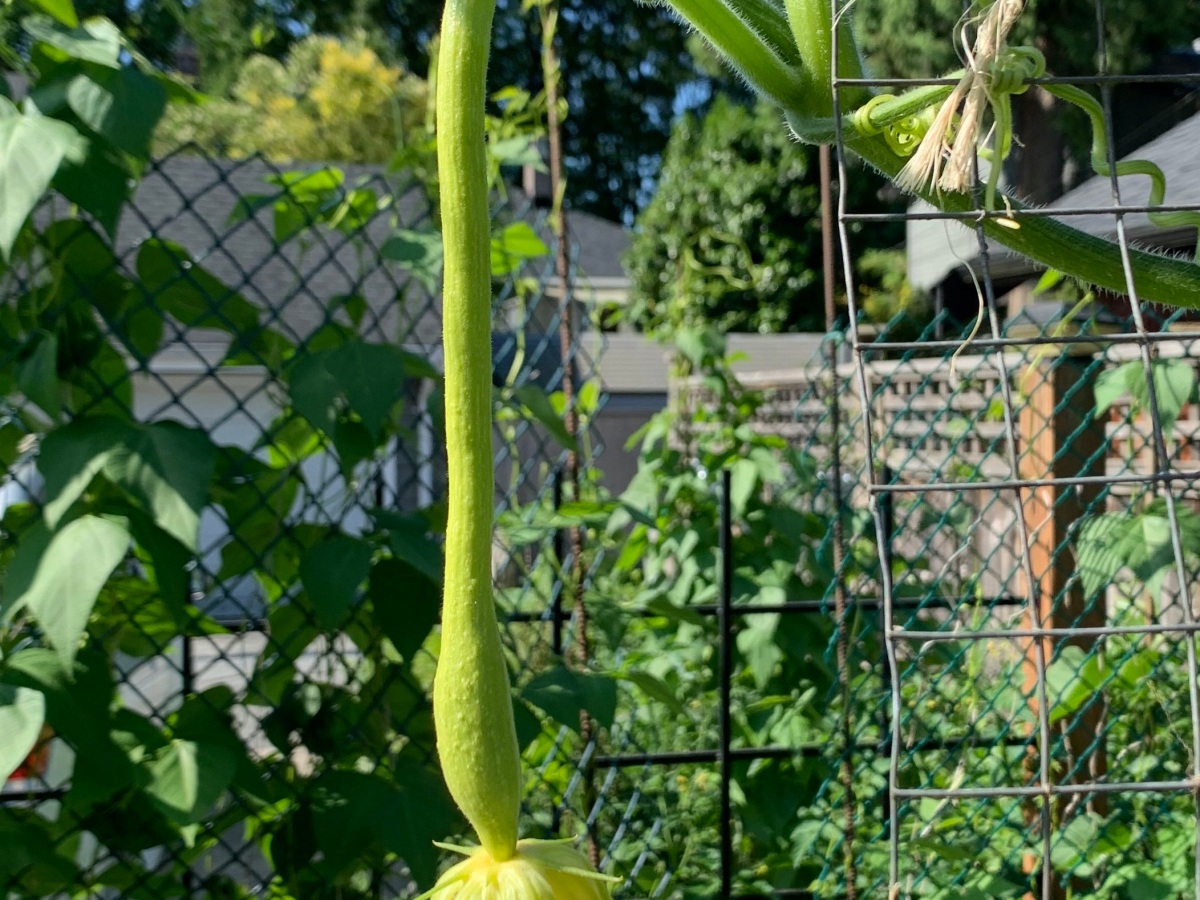
Tromboncino. The squash.
Its many names reflect its amazing vigour and shape. In Latin: Curcurbita moschata. In Italian and English, zucchetta or zucchetta rampicante. Vines and fruit can grow a yard, or a metre, in a week, and into its serpentine shape. Snake zucchini, crookneck vine, climbing zucchini all mean this summer version is a tasty zucchini-like squash and the winter version, true to its Latin name, is a Butternut squash with giraffe neck.
The summer variety becomes a winter variety by letting it grow until the seeds are mature, then basking in the sun until the skin toughens. The result: A shelf-life of 6 months, no canning, no freezing, and enough from one plant to last the winter.
October plenty
Assuming no frost, the production will slow, but all four of the tromboncino’s offerings will be available: Four? Summer squash and winter squash count as two. The flowers are enormous, and flowers are edible raw or as a tempura. Offering #4, probably ready within the squash harvested in August: Seeds. Seeds of many squash are…
The March tromboncino
Back in August, these aggressive vines were producing too many summer squash to handle. Some grew to maturity, some two metres, some less. As their shell hardened in the sun, and as August became December, some were eaten. The remaining squash remain intact until when? Some have been dormant, and edible, for six months. The…
The February tromboncino
I trumpet its virtues: These are monsters stored for winter and none have shown signs of sagging. The secret is a tough outer skin, nature’s way of saving the seed for the warm soil of summer. Cut off a foot- long chunk of seedless squash, peel and cook. The remainder will self -heal.
September payoff
On the West Coast, powdery mildew is a barrier to zucchini production. Tromboncino not at all. Is it resistant to disease because it is in the heavens? It thrives. It produces giants. It branches up and out. Some of the flowers are grapefruit sized. When two pollen-laden bumblebees delve into the male flower will they…
The August Tromboncino
Although this climbing squash will thrive on the ground if given space, your baby tromboncino will need 4 meters (12 feet) of climbing space to thrive. It will keep growing until frost, and is more or less immune to the pests of zucchini, such as powdery mildew. Growing space can be horizontal or vertical, but…



